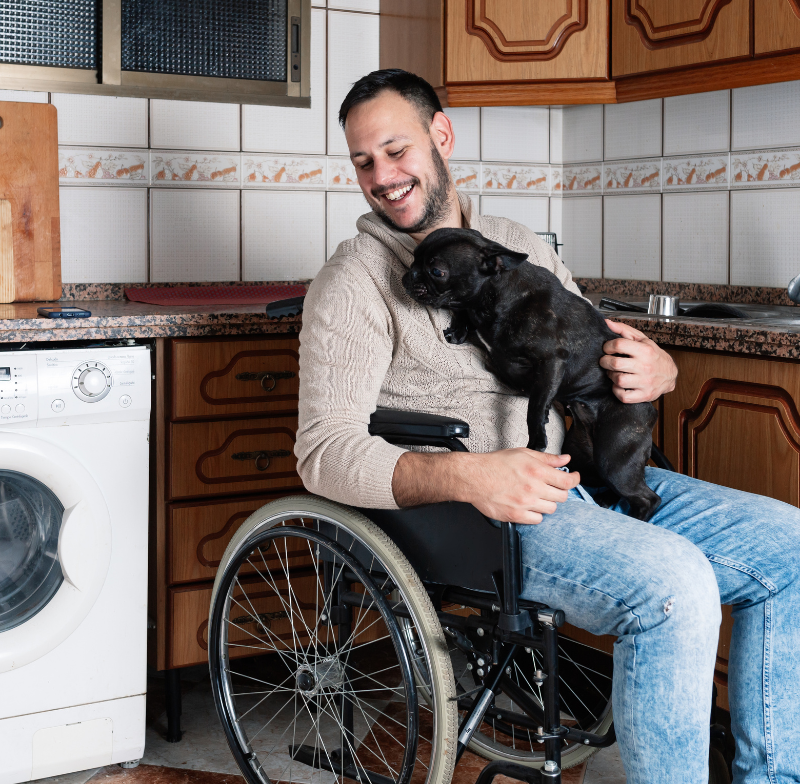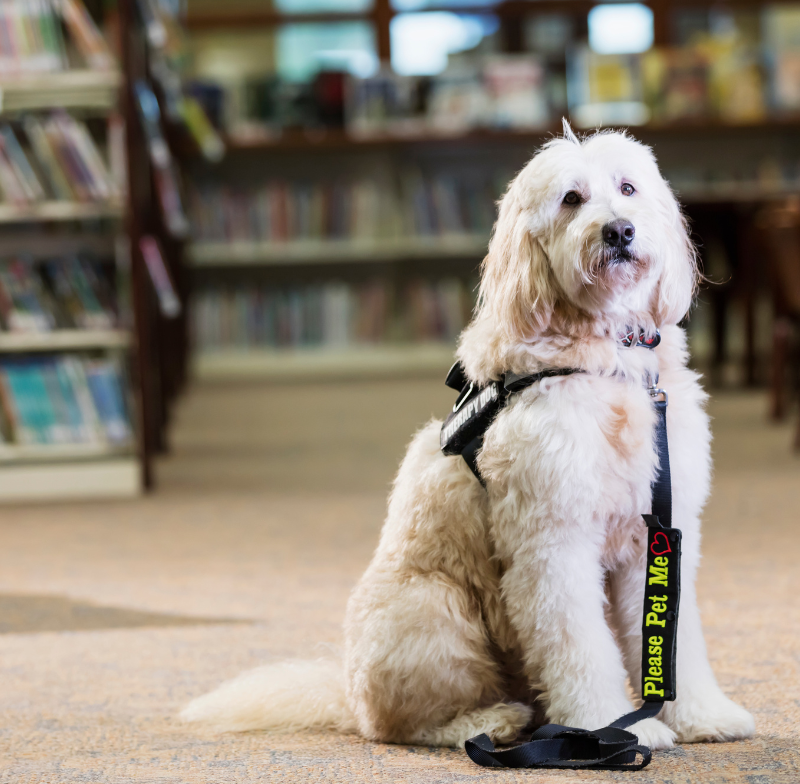Training a dog or puppy is a rewarding experience, but it can be particularly challenging if you have a disability. Whether you have a visible or non-visible disability, adapting training techniques to fit your needs is essential for success. This guide will explore effective methods, tools, and strategies to help you train your dog if you are disabled while considering accessibility and ease of use.
Understanding Disabilities and Dog Training
Disabilities can be physical, sensory, cognitive, or invisible conditions that impact daily life. Training a dog while dealing with mobility challenges, chronic pain, neurological conditions, or sensory impairments requires tailored techniques. The key is to make the training process efficient and stress-free, utilizing tools, reinforcement strategies, and assistive devices to create a positive experience for both you and your dog.
Choosing the Right Training Techniques
Training a dog involves consistency, repetition, and patience. If mobility is a concern, using remote-controlled training tools, verbal commands, and designated training areas can help reduce the need for constant movement. For individuals with sensory impairments, incorporating sound-based or visual cues can improve communication. Those with cognitive challenges may benefit from structured, written training plans to stay organized.
Clickers and Whistles: Enhancing Communication
Clicker training is an effective method for reinforcing good behavior. A clicker is a small device that emits a distinct sound, signaling to the dog that they performed the correct action. This method is especially helpful for individuals who may struggle with vocal commands or prefer a tactile training approach. Similarly, training whistles can serve as a reliable auditory cue, particularly useful for those with visual impairments.
Using High-Value Treats for Motivation
High-value treats are an excellent tool for reinforcing positive behavior. These treats are typically more desirable than regular kibble and can help maintain focus during training sessions. Ideal high-value treats include small pieces of cooked chicken, cheese, freeze-dried liver, or peanut butter (without xylitol). The key is to find a treat that your dog finds irresistible, ensuring they remain engaged.
Interactive Toys to Aid Training
Toys play a crucial role in training, providing both mental stimulation and motivation. Puzzle toys encourage problem-solving and keep dogs engaged, making them ideal for individuals who may need to limit physical activity. Tug toys and treat-dispensing toys can also be useful for reinforcing commands and reducing excess energy. Choosing toys that cater to your dog’s needs and energy levels can enhance training effectiveness.
Adapting Training for Mobility Challenges
For individuals with mobility impairments, training can be adapted by using assistive tools such as long-handled treat dispensers, remote-controlled reward systems, and designated training spots to minimize movement. Teaching your dog to respond to voice commands rather than hand signals can also be beneficial. Additionally, incorporating leash training indoors before progressing to outdoor environments can help improve control and reduce the risk of falls.
Training Dogs for Sensory Disabilities
For those with visual impairments, incorporating sound-based commands and using training whistles can enhance communication. Dogs can be trained to respond to specific noises, such as a bell or chime, to guide their owner effectively. For individuals with hearing impairments, hand signals, visual cues, and vibrating collars can be effective training tools. The goal is to create clear, consistent signals that your dog can understand.
Catering to Cognitive or Non-Visible Disabilities
Cognitive disabilities, including ADHD, autism, and PTSD, can impact training consistency. Establishing a structured training routine and using written or visual guides can help maintain progress. Service or emotional support dogs can be trained to recognize anxiety or distress and provide comfort. Consistency is key, and breaking training sessions into short, manageable steps can prevent overwhelm.
Using Professional Dog Trainers for Assistance
If training feels overwhelming, seeking assistance from a professional dog trainer is an excellent option. Trainers who specialize in adaptive techniques can tailor training sessions to accommodate disabilities. Positive reinforcement trainers are particularly beneficial, as they focus on rewarding good behavior rather than using punishment-based methods. Look for trainers experienced in working with individuals with disabilities, ensuring they can provide the necessary support and modifications.
Best Training Treats for Disabled Owners
Selecting the right treats for training is essential for success. Soft, easily chewable treats reduce preparation time, making them ideal for individuals with limited dexterity. Pre-cut training treats or squeeze-tube treats can minimize effort. Some of the best options include cooked meats, freeze-dried liver, cheese cubes, or commercially available training treats formulated for high motivation.
Creating a Training Schedule That Works for You
A structured training schedule ensures consistency, which is vital for success. For individuals with chronic illnesses or fatigue, short but frequent training sessions can be more effective than longer sessions. Training should be incorporated into daily routines to make it manageable. Using a journal or mobile app to track progress can help maintain consistency.
Common Challenges and How to Overcome Them
Training a dog with a disability can present unique challenges. If consistency is an issue due to fluctuating health, using technology such as automatic treat dispensers or pre-recorded command buttons can help maintain training progress. If physical exertion is a concern, training sessions can be adapted to seated or stationary positions.
Empowering You and Your Dog Through Adaptive Training
Deciding to train a dog or puppy as a disabled person is entirely possible with the right strategies and tools. By incorporating adaptive techniques, high-value rewards, interactive toys, and assistive training tools such as clickers and whistles, you can create a positive training experience. Whether through self-training or seeking professional guidance, the key is to tailor the approach to fit your abilities and your dog’s learning style. With patience, consistency, and the right support, training your dog can be a fulfilling and successful journey.
Featured Image by Fran • @mallorcadogphotography from Pixabay
Discover more from The Blue Badge Blog
Subscribe to get the latest posts sent to your email.




Leave a Reply